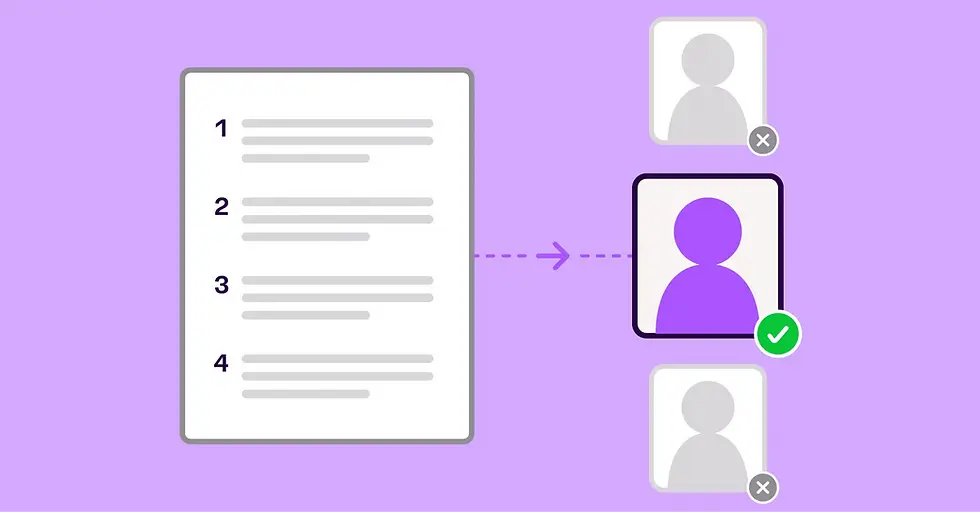How to Implement Multi-Layer Security for Enterprise WordPress
- Muhammad Hassan
- Apr 3
- 4 min read

As businesses increasingly rely on WordPress for their digital presence, securing enterprise websites has become a top priority. Implementing multi-layer security ensures robust protection against cyber threats, safeguarding sensitive data and maintaining seamless operations. This guide explores the key strategies to enhance security in enterprise WordPress development and why organizations should consider a hire remote development team for specialized security expertise.
1. Understanding Multi-Layer Security for WordPress
Multi-layer security involves deploying multiple protective measures across different levels of a system. For enterprise WordPress development, this approach includes securing hosting environments, strengthening authentication, and implementing real-time monitoring solutions. By combining these layers, businesses can mitigate risks and prevent potential breaches.
2. Secure Hosting and Infrastructure

Choosing a reliable hosting provider with built-in security features is the first step in multi-layer security. Key considerations include:
Managed WordPress Hosting – Opt for providers offering automatic backups, firewalls, and malware scanning.
Dedicated Servers – Avoid shared hosting for enterprise sites to reduce security vulnerabilities.
SSL Certificates – Encrypt data transmission to protect against man-in-the-middle attacks.
A hire remote development team with expertise in secure hosting can help businesses configure and maintain a protected WordPress infrastructure.
3. Implementing Strong Authentication Measures
Weak credentials are a leading cause of security breaches. Strengthening authentication involves:
Two-Factor Authentication (2FA) – Requires a secondary verification step for login access.
Role-Based Access Control (RBAC) – Limits user permissions based on job responsibilities.
Password Policies – Enforce complex passwords and regular updates to enhance security.
4. Firewall Protection and Intrusion Prevention

Web application firewalls (WAFs) serve as a barrier against malicious traffic. Implementing a firewall helps:
Block SQL Injection and XSS Attacks – Prevent unauthorized access and data breaches.
Monitor Suspicious Activity – Identify and mitigate threats in real-time.
Enable DDoS Protection – Safeguard websites from distributed denial-of-service attacks.
5. Regular Security Audits and Updates
Keeping WordPress core, themes, and plugins updated minimizes security risks. Best practices include:
Scheduled Security Audits – Identify vulnerabilities and apply necessary fixes.
Automatic Updates – Ensure all components are running the latest security patches.
Plugin and Theme Vetting – Use only reputable plugins with strong security track records.
6. Data Encryption and Secure Backups

Protecting sensitive business data requires encryption and reliable backup strategies:
Database Encryption – Secure stored information from unauthorized access.
Offsite Backups – Regularly store backups on cloud services with robust encryption.
Version Control Systems – Track changes and restore previous versions in case of breaches.
7. Implementing AI-Driven Security Solutions
AI-based security tools enhance WordPress security by:
Automated Threat Detection – Identifying patterns of cyberattacks before they escalate.
Behavioral Analysis – Monitoring user activity to detect anomalies.
Self-Healing Systems – AI-powered tools automatically patch vulnerabilities.
8. Secure APIs and Third-Party Integrations

Many enterprise WordPress development projects rely on APIs and third-party services. Secure integration includes:
OAuth and Token-Based Authentication – Protect API endpoints from unauthorized access.
Regular API Security Reviews – Identify potential weaknesses in third-party integrations.
Encrypted Data Transmission – Ensure data exchanged via APIs is encrypted and secure.
9. Educating Teams on Security Best Practices
Human error remains a critical factor in security breaches. Businesses should:
Conduct Regular Security Training – Educate employees on phishing, password hygiene, and data handling.
Create an Incident Response Plan – Prepare teams to react effectively to potential security threats.
Limit User Permissions – Grant access only to necessary areas of the WordPress site.
10. Hiring Experts for Continuous Security Management

Managing enterprise WordPress security requires ongoing vigilance. Companies should consider a hire remote development team to:
Monitor Security Logs – Detect and respond to threats in real-time.
Perform Regular Penetration Testing – Simulate attacks to identify vulnerabilities.
Ensure Compliance with Industry Standards – Maintain compliance with GDPR, HIPAA, and other regulations.
Conclusion
Multi-layer security is essential for protecting enterprise WordPress development projects from evolving cyber threats. By implementing secure hosting, authentication measures, firewalls, encryption, and AI-driven solutions, businesses can significantly enhance their WordPress security. Additionally, working with a hire remote development team ensures ongoing security management and expert guidance. Prioritizing these strategies will help enterprises build a resilient and secure WordPress environment, safeguarding their data and digital assets.
FAQs
1. Why is multi-layer security important for enterprise WordPress websites?
Multi-layer security provides comprehensive protection by addressing different attack vectors. It ensures data integrity, prevents unauthorized access, and enhances overall website reliability.
2. How often should security audits be conducted?
Regular security audits should be conducted at least quarterly. However, high-traffic enterprise websites may require monthly audits to stay ahead of emerging threats.
3. What are the key benefits of using AI-driven security solutions?
AI-driven security tools offer automated threat detection, anomaly monitoring, and self-healing capabilities, making WordPress security proactive rather than reactive.
4. Can a remote development team improve WordPress security?
Yes, a hire remote development team with specialized security expertise can implement advanced security measures, conduct audits, and provide continuous monitoring to prevent cyber threats.
5. How do encryption and backups enhance WordPress security?
Encryption protects sensitive data from unauthorized access, while secure backups ensure business continuity in case of security breaches or data loss.





Comments